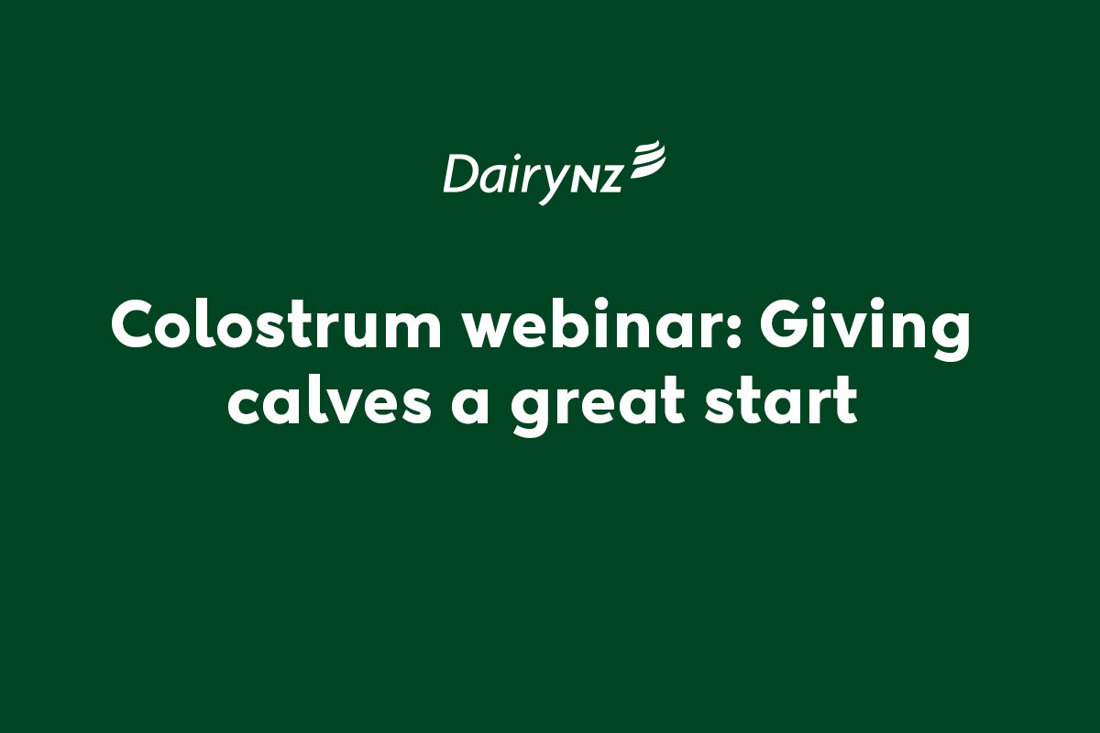Colostrum
4 min read
Providing the right amount of the best colostrum early in life is the right thing to do for your calves. Gold colostrum provides energy and health benefits for all calves and is part of world-leading animal care.
Calves are born with a non-developed immune system and must absorb antibodies from colostrum until their own immune system becomes functional. At 24 hours old, the calf gut "closes" and becomes unable to absorb antibodies. Calves that fail to absorb enough antibodies in the first 24 hours are said to have suffered Failure of Passive Transfer (FPT).
All calves, including bobbies, must receive adequate fresh colostrum within the first 12 hours of life and should be fed colostrum, or a colostrum substitute, for at least the first four days of life.
Giving your newborn calves the correct amount of high-quality colostrum will help ensure:
You can achieve this by:
While research completed in 2015 showed that about a third of calves in New Zealand suffered from failure of passive transfer (FPT), there have been significant improvements in colostrum management practices since then. The increased adoption of Brix refractometers has helped farmers better assess colostrum quality on-farm, leading to improved calf health outcomes.
However, FPT remains a concern on some farms. If you have concerns about your calves' colostrum intake or passive transfer status, talk to your veterinarian about IgG blood testing to assess your herd's performance. Blood samples of 12 healthy calves between one and seven days of age can be sent to the lab to estimate the antibody levels. Doing this at the beginning and peak of calving will give you the best insight into how it is going on your farm.
Brix refractometry has become increasingly popular as a practical on-farm tool for assessing colostrum quality. Colostrum measuring 22% Brix or higher is considered good quality and should be prioritised for newborn calves.
Gold (1st milking) colostrum is the highest quality colostrum and should be fed to newborns, but quality can vary. Brix refractometers can be used to measure the antibody level in colostrum. Gold colostrum that measures 22 percent or more is considered high quality. For the best results, the highest quality colostrum you have available, should be fed to newborns.
It’s most effective to feed colostrum in the first 6-12 hours of life as antibodies cannot be absorbed after 24 hours. Every hour counts when it comes to feeding colostrum.
Newborn calves need at least 10 percent of their bodyweight (4 litres for a 40kg calf) of gold colostrum within the first 6-12 hours of life. Calves can only take 1.5-2 litres in their stomach (abomasum), so two feeds within the first 12 hours is the target.
Bacteria in colostrum can decrease its quality and prevent calves from absorbing antibodies. Contamination can occur during colostrum harvest, storage, and feeding. Clean collection buckets before use and feed calves from youngest to oldest (sick calves last). Use hot soapy water to clean all equipment and buckets after each use.
Feeding fresh colostrum is best but if you need to keep it for any length of time, even two or three hours, it is important to ensure the quality doesn’t decrease.
Potassium sorbate is a chemical food preservative. Its anti-microbial properties stop the growth and spread of harmful bacteria. When used correctly, it inhibits bacterial growth in colostrum and milk. It can also be used to preserve antibody levels in 'gold' (first milking) colostrum.
All equipment MUST be clean and sterile
| Potassium Sorbate | to | Water (stir thoroughly) |
| 50 grams | to | 100 mls |
| 500 grams | to | 1 litre |
| 5,000 grams | to | 10 litres |
| 10 kg | to | 20 litres |
| Potassium Sorbate (50% solution) | to | Colostrum |
| 1 ml | to | 100 mls |
| 10 mls | to | 1 litre |
| 100 mls | to | 10 litres |
| 200 mls | to | 20 litres |
| 1 litre | to | 100 litres |
Are your calves getting the colostrum they need? How are you supposed to know and what can you change to make sure they do? And what are some of the common myths about colostrum? Find out in this episode of Talking Dairy, featuring veterinarian and researcher Emma Cuttance.
Find out about what management practices can help make sure your calves get quality colostrum when they need it.

Now’s the perfect time to check in, plan, and set up for a strong season. We’ve pulled together smart tips and tools to help you stay ahead all winter long.
Whether you prefer to read, listen, or download handy guides, we’ve got you covered with trusted tools to support your journey every step of the way.
Put our proven strategies and seasonal tools to work. Boost production, support animal health and watch your profits hum.
Tools that are backed by science, shaped by farmers and made for this season.
That’s Summer Smarts.